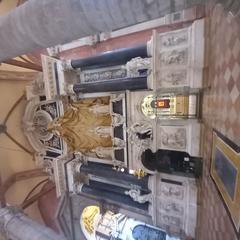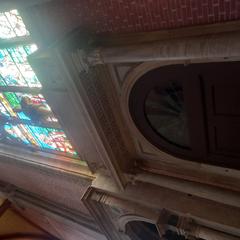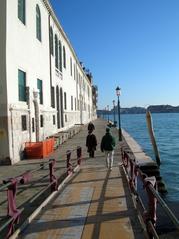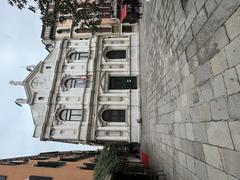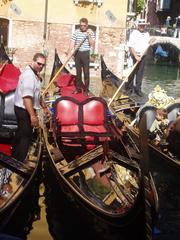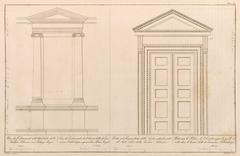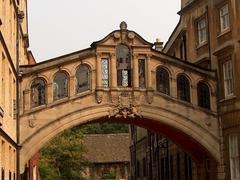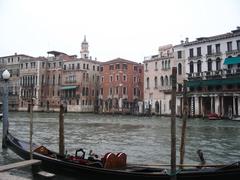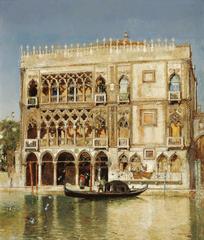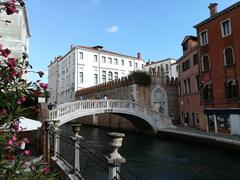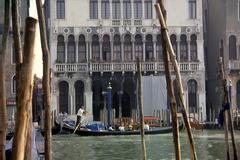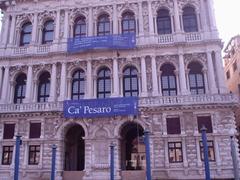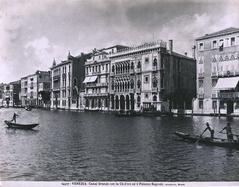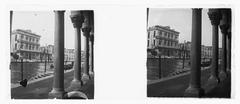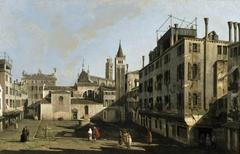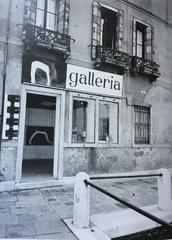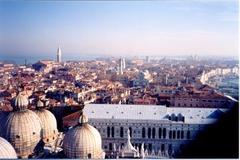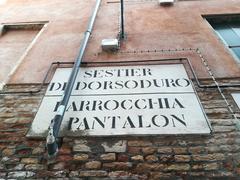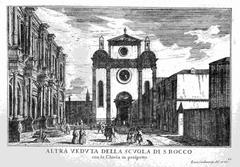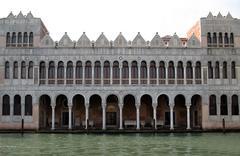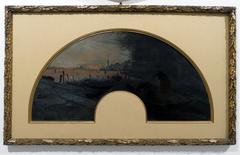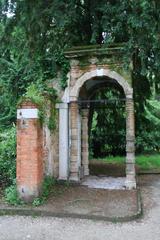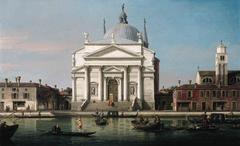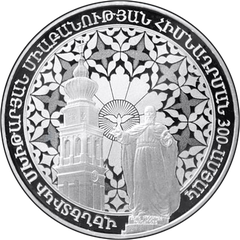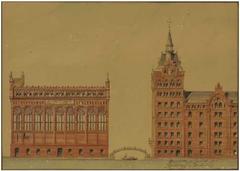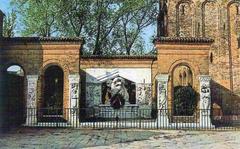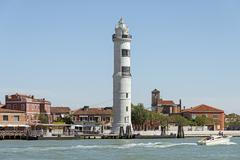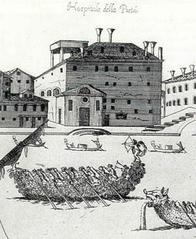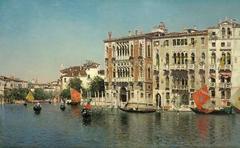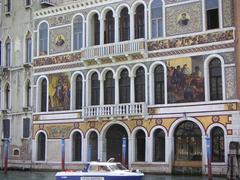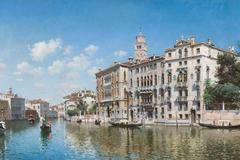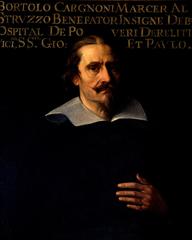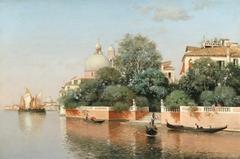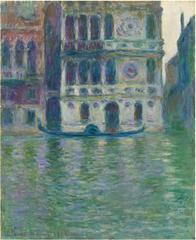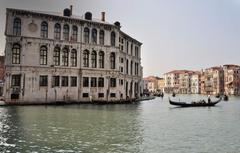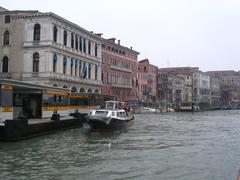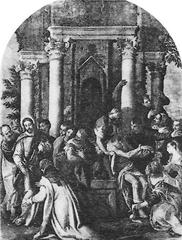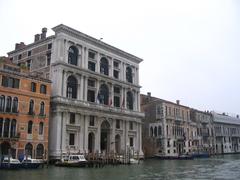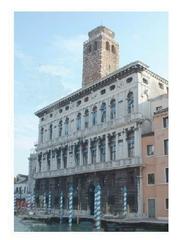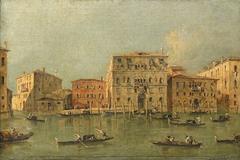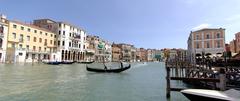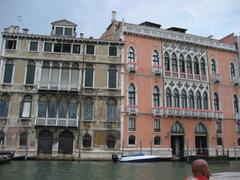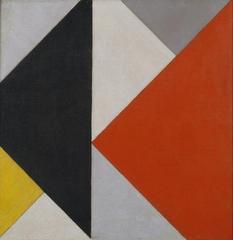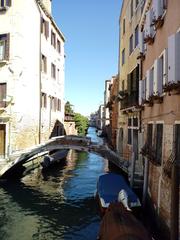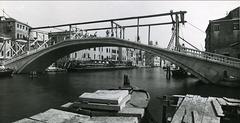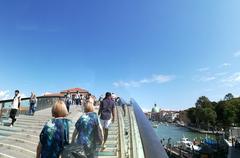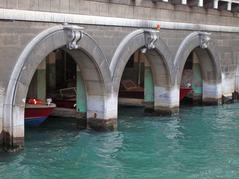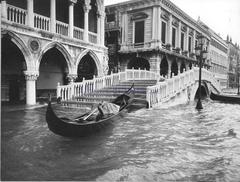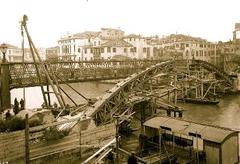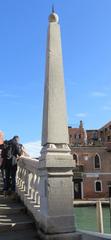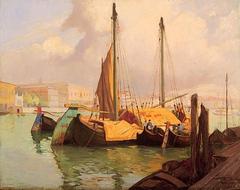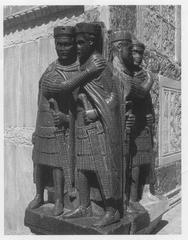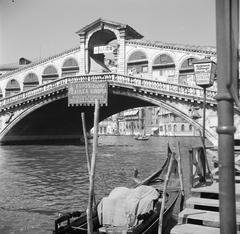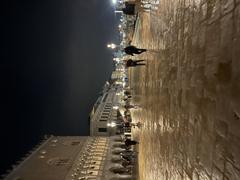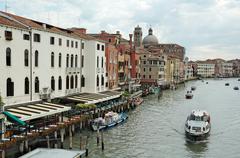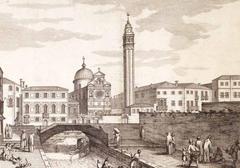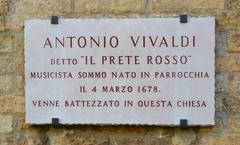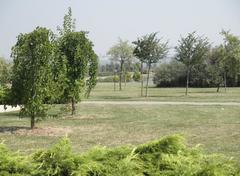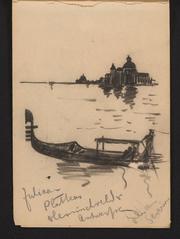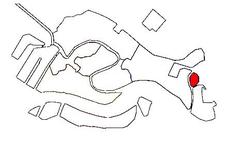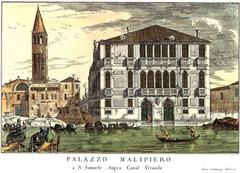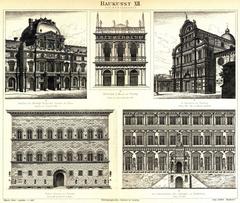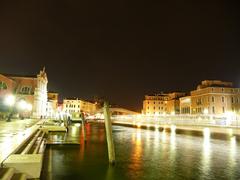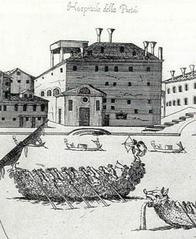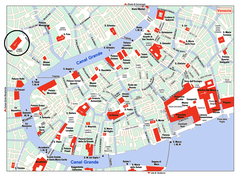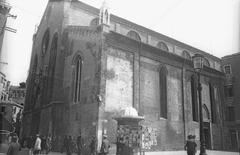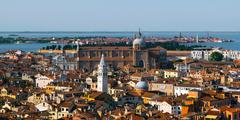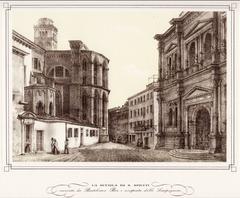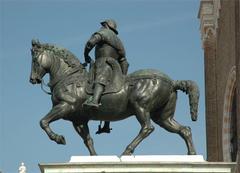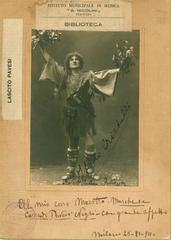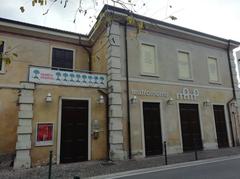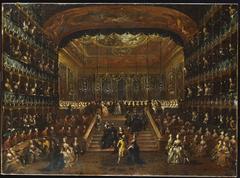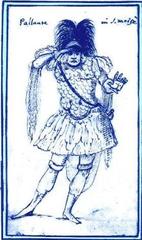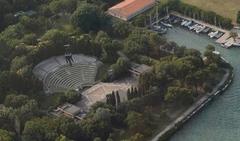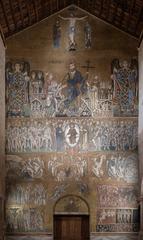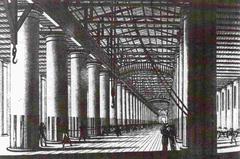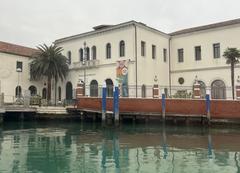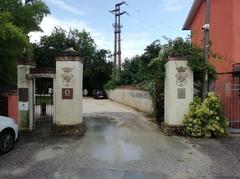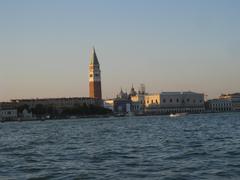
Visiting the Basilica dei Santi Giovanni e Paolo: History, Tickets, and Tips
Date: 18/07/2024
Introduction
The Basilica dei Santi Giovanni e Paolo, affectionately known as San Zanipolo, stands as one of Venice’s most revered landmarks. This awe-inspiring Gothic basilica, whose construction began in the 13th century, is not only an architectural marvel but also a testament to Venice’s profound religious and cultural history. Legend has it that Doge Jacopo Tiepolo, inspired by a dream in 1226, donated the land for the church to the Dominican Order (Exploring the Basilica dei Santi Giovanni e Paolo). The Dominicans, known for their scholarship and preaching, aimed to create a grand edifice that reflected their stature and served as a beacon of faith. Spanning over a century, the basilica’s construction was completed in 1430, allowing it to incorporate various architectural styles from the 14th and 15th centuries. Today, it stands as a magnificent example of Venetian Gothic architecture, with a unique blend of Gothic and Renaissance elements that speak to its historical evolution.
Beyond its architectural splendor, the Basilica dei Santi Giovanni e Paolo holds immense historical significance as the burial place of 25 Venetian Doges, the supreme leaders of the Venetian Republic. These grand and elaborate funerary monuments, crafted by renowned Venetian sculptors, transform the basilica into a historical archive of Venice’s past.
Table of Contents
- Introduction
- A Legacy in Stone - Construction and Evolution
- A Fusion of Styles - Architectural Significance
- The Doge’s Resting Place - Historical Significance
- Notable Artworks and Religious Significance
- Visitor Information - Tickets, Hours, and Travel Tips
- Nearby Attractions
- Tips for Your Visit
- FAQ
- Conclusion and Call to Action
A Legacy in Stone - Construction and Evolution
The basilica’s history dates back to the 13th century. Legend has it that Doge Jacopo Tiepolo, inspired by a dream in 1226, donated the land for the church to the Dominican Order. The Dominicans, known for their scholarship and preaching, sought to establish a grand edifice that would reflect their stature and serve as a beacon of faith.
Construction began in 1246, but the sheer scale of the project meant that it spanned over a century, finally reaching completion in 1430. This extended construction period allowed the basilica to organically evolve, incorporating various architectural styles prevalent throughout the 14th and 15th centuries.
A Fusion of Styles - Architectural Significance
The Basilica dei Santi Giovanni e Paolo is a magnificent example of Venetian Gothic architecture, albeit with a unique twist. While the basilica’s facade remains unfinished, its grandeur is undeniable. The interplay of brickwork and white Istrian marble, a hallmark of Venetian architecture, creates a visually striking contrast. The main entrance boasts a beautiful Gothic portal, hinting at the architectural marvels within.
Stepping inside, visitors are greeted by a vast, airy space that speaks to the Dominican emphasis on preaching and community gathering. The basilica’s interior, unlike many other Venetian churches adorned with opulent decorations, maintains a relative simplicity that accentuates its monumental scale. The soaring columns, the pointed arches, and the ribbed vaulting are all characteristic of the Gothic style, creating a sense of verticality that draws the eye heavenward.
However, the basilica’s architectural significance lies in its fascinating blend of Gothic and Renaissance elements. The influence of the burgeoning Renaissance is evident in the later additions to the basilica, particularly in the chapels that line the nave. These chapels, commissioned by wealthy Venetian families, showcase the evolving artistic tastes of the time, incorporating classical motifs and Renaissance sculptural styles.
The Doge’s Resting Place - Historical Significance
Beyond its architectural splendor, the Basilica dei Santi Giovanni e Paolo holds immense historical significance as the burial place of 25 Venetian Doges. These Doges, the supreme leaders of the Venetian Republic, chose San Zanipolo as their final resting place, transforming the basilica into a “Pantheon” of Venetian history.
The Doge’s funerary monuments, grand and elaborate, are not merely tombs but powerful statements of power, prestige, and artistic patronage. Each monument, crafted by renowned Venetian sculptors, reflects the individual Doge’s achievements and the artistic trends of their era.
Among the most notable monuments is the tomb of Doge Andrea Vendramin, a masterpiece of the Venetian Renaissance. Crafted by the celebrated sculptor Tullio Lombardo, the monument’s intricate carvings, classical motifs, and life-size figures showcase the shift from the Gothic to the Renaissance aesthetic.
The presence of these Doge’s tombs elevates the Basilica dei Santi Giovanni e Paolo beyond a religious building; it becomes a chronicle of Venice’s past, a testament to its leaders, and a showcase of its artistic evolution.
Notable Artworks and Religious Significance
The basilica houses a remarkable collection of sculptures, paintings, and funerary monuments, many created by renowned Venetian masters.
Artistic Heritage
-
The Martyrdom of Saint John the Baptist by Alvise Vivarini (c. 1480) - Located in the Scarpa Chapel, this painting is a significant work of the early Renaissance in Venice. It depicts the dramatic scene of Saint John the Baptist’s beheading with vivid colors and meticulous detail, showcasing Vivarini’s mastery of perspective and anatomy.
-
The Coronation of the Virgin by Giovanni Bellini (1515) - This altarpiece, originally in the chapel of the Scuola Grande di San Marco, is now displayed in the sacristy. It is considered one of Bellini’s late masterpieces, demonstrating his evolution towards a more serene and luminous style. The painting depicts the Virgin Mary crowned by Christ, surrounded by angels and saints, bathed in a heavenly golden light.
-
Monuments to the Doges - San Zanipolo served as the final resting place for numerous Venetian Doges, resulting in a collection of grand funerary monuments that adorn the basilica. These monuments, often adorned with intricate carvings, sculptures, and polychrome marble, offer a glimpse into Venice’s political history and artistic evolution. Some notable Doge monuments include:
- Monument to Doge Pietro Mocenigo (d. 1476) - Attributed to Pietro Lombardo and his sons, this monument marks a transition from the Gothic to Renaissance styles.
- Monument to Doge Andrea Vendramin (d. 1478) - Considered one of the finest examples of Renaissance funerary architecture in Venice, this monument by Tullio Lombardo is a harmonious blend of sculpture, architecture, and decorative elements.
- Monument to Doge Nicolò Marcello (d. 1574) - This monument, attributed to Girolamo Campagna, reflects the Mannerist style with its dynamic composition and dramatic use of marble.
-
The Rosary Chapel (Cappella del Rosario) - This chapel, rebuilt after a fire in 1867, was originally dedicated to celebrating the Venetian victory at the Battle of Lepanto (1571), attributed to the intercession of the Virgin of the Rosary. While the original chapel was destroyed, the reconstructed chapel retains some significant artworks, including:
- Ceiling paintings by Paolo Veronese (replacements of the originals) - Veronese’s vibrant style and masterful use of color are evident in these ceiling paintings, which depict scenes from the life of the Virgin Mary.
- Paintings by Jacopo Tintoretto and Palma the Younger - These paintings, also depicting scenes related to the Battle of Lepanto and the Virgin of the Rosary, showcase the artistic talents of these Venetian masters.
Religious Significance
-
Dedication to Saints John and Paul - The basilica is dedicated to two early Christian martyrs, John and Paul, who, according to tradition, were Roman officials martyred for their faith during the reign of Emperor Diocletian. While their actual burial place remains uncertain, the basilica claims their relics, making it a significant pilgrimage site.
-
Dominican Order - The basilica has been under the care of the Dominican Order since its construction in the 13th century. The Dominicans, known for their preaching and scholarship, played a crucial role in the religious and intellectual life of Venice. Their presence is evident in the basilica’s architecture, which reflects the order’s emphasis on simplicity and preaching, and in the numerous tombs of Dominican friars within the church.
-
Role in Venetian Society - Throughout its history, San Zanipolo has been deeply intertwined with the civic and religious life of Venice. It served as a venue for important state ceremonies, processions, and celebrations. The basilica’s grandeur and artistic richness reflect the piety and prestige of the Venetian Republic.
-
Spiritual Significance - Beyond its historical and artistic importance, San Zanipolo remains an active place of worship. The basilica’s serene atmosphere, adorned with masterpieces and steeped in centuries of prayer and devotion, offers a space for spiritual reflection and contemplation.
Visitor Information - Tickets, Hours, and Travel Tips
For those planning to visit this remarkable basilica, here’s some essential information:
-
Visiting Hours - The basilica is open to visitors from Monday to Saturday, 9:00 AM to 6:00 PM, and on Sundays from 12:00 PM to 6:00 PM. It’s advisable to check the official website for any changes in hours due to special events or religious services.
-
Tickets - Entry to the basilica costs €3.00 for adults. There are reduced prices for students and seniors, and children under the age of 12 can enter for free. Tickets can be purchased at the entrance or online through the basilica’s official website.
-
Guided Tours - Guided tours are available and highly recommended to fully appreciate the basilica’s historical and artistic significance. Tours can be booked in advance.
-
Photography - Photography is allowed inside the basilica, but the use of flash is prohibited to preserve the artworks.
Nearby Attractions
While in the area, make sure to visit the following nearby attractions:
-
Scuola Grande di San Marco - Just across the Campo from the Basilica, this grand building was once the headquarters of one of Venice’s most powerful lay confraternities. Today, it houses the city’s hospital museum, offering a fascinating glimpse into the history of medicine (Scuola Grande di San Marco).
-
Monument to Bartolomeo Colleoni - This impressive equestrian statue, considered one of the finest examples of Renaissance sculpture, stands proudly in the Campo. It depicts the renowned Venetian condottiere (military leader) Bartolomeo Colleoni.
-
Hospital of Santi Giovanni e Paolo - Located adjacent to the Basilica, this historic hospital complex was once one of the largest and most important in Europe. While no longer functioning as a hospital, parts of the complex are open to the public, offering a glimpse into its rich history.
-
Rialto Bridge - A short walk from the Basilica will take you to the iconic Rialto Bridge, one of Venice’s most famous landmarks. This historic bridge spans the Grand Canal and offers stunning views of the city.
-
St. Mark’s Square - A slightly longer walk or a short vaporetto (water bus) ride will bring you to St. Mark’s Square, the heart of Venice. Here, you can marvel at the splendor of St. Mark’s Basilica, Doge’s Palace, and other architectural gems.
-
Exploring Castello District - The Basilica is situated in the Castello district, a charming and less crowded area of Venice compared to San Marco. Take some time to wander through its narrow streets, discover hidden squares, and soak up the authentic Venetian atmosphere.
-
Gondola Ride - No trip to Venice is complete without a gondola ride. Several gondola stations are located near the Basilica, offering a romantic and unforgettable way to experience the city’s canals.
-
Venetian Cuisine - The area surrounding the Basilica offers a variety of dining options, from traditional Venetian trattorias to modern restaurants. Be sure to sample local specialties like cicchetti (Venetian tapas), risotto al nero di seppia (risotto with cuttlefish ink), and frittura mista (mixed fried seafood).
Tips for Your Visit
- Arrive early or later in the day - To avoid large crowds, especially during peak season, consider visiting the Basilica in the morning or late afternoon.
- Allow ample time - Allocate at least an hour to fully appreciate the Basilica’s art and architecture.
- Respectful silence - Remember that this is an active place of worship, so maintain a respectful silence while inside.
- Comfortable shoes - Venice involves a lot of walking, so wear comfortable shoes.
- Combine your visit - Make the most of your time by combining your visit to the Basilica with other nearby attractions.
FAQ
Q: What are the Basilica dei Santi Giovanni e Paolo visiting hours? A: The basilica is open from Monday to Saturday, 9:00 AM to 6:00 PM, and on Sundays from 12:00 PM to 6:00 PM. Check the official website for any changes.
Q: How much do tickets cost for Basilica dei Santi Giovanni e Paolo? A: Tickets are €3.00 for adults. There are reduced prices for students and seniors, and children under 12 enter for free.
Q: Are guided tours available? A: Yes, guided tours are available and recommended. They can be booked in advance.
Q: Can I take photographs inside the basilica? A: Photography is allowed, but flash photography is prohibited.
Conclusion and Call to Action
Visiting the Basilica dei Santi Giovanni e Paolo is not just about admiring its breathtaking architecture and art but also about connecting with the soul of Venice. This basilica stands as a testament to the city’s rich history, unwavering faith, and enduring artistic legacy. From the intricate carvings on the Doge’s tombs to the serene spirituality that permeates its hallowed halls, San Zanipolo offers a profound and immersive experience. Whether you are an art enthusiast, a history buff, or a spiritual pilgrim, a visit to this iconic landmark provides a journey through time and a glimpse into the heart of Venetian culture and spirituality (Visiting Basilica dei Santi Giovanni e Paolo). Plan your visit to San Zanipolo, immerse yourself in Venice’s rich history, and experience the enduring power of art, faith, and history. For more information and updates, check the official website and follow us on social media.
